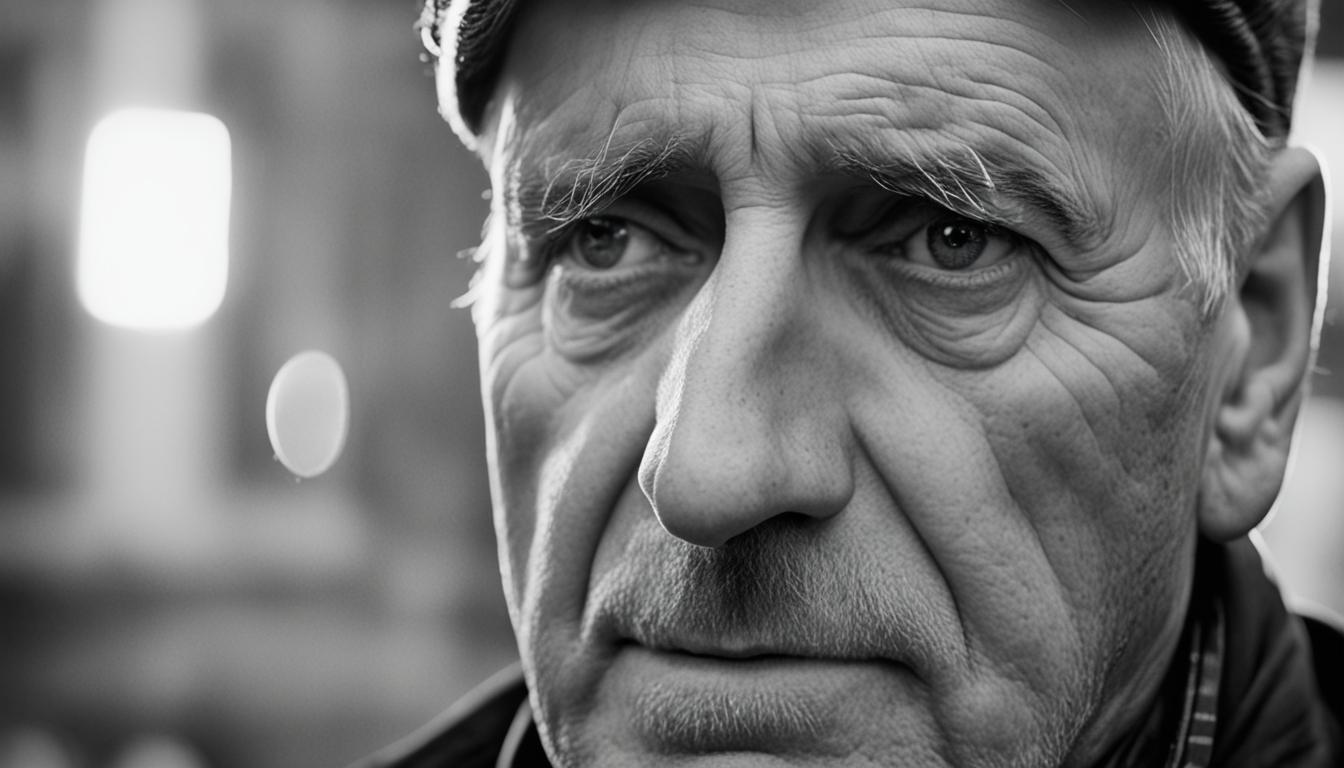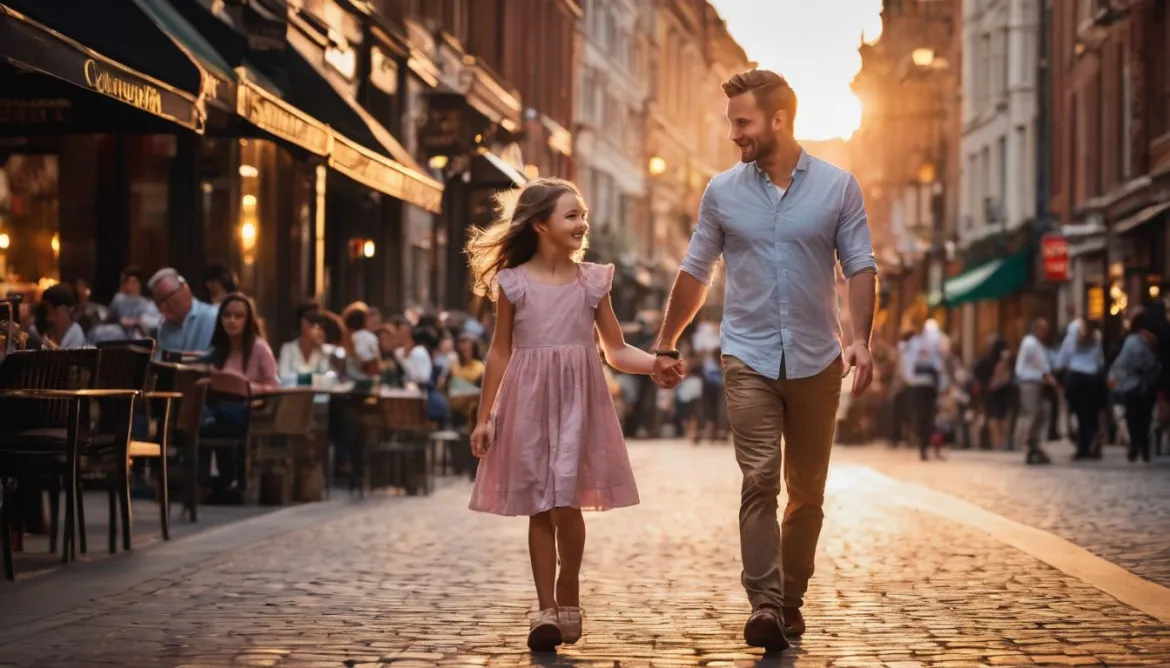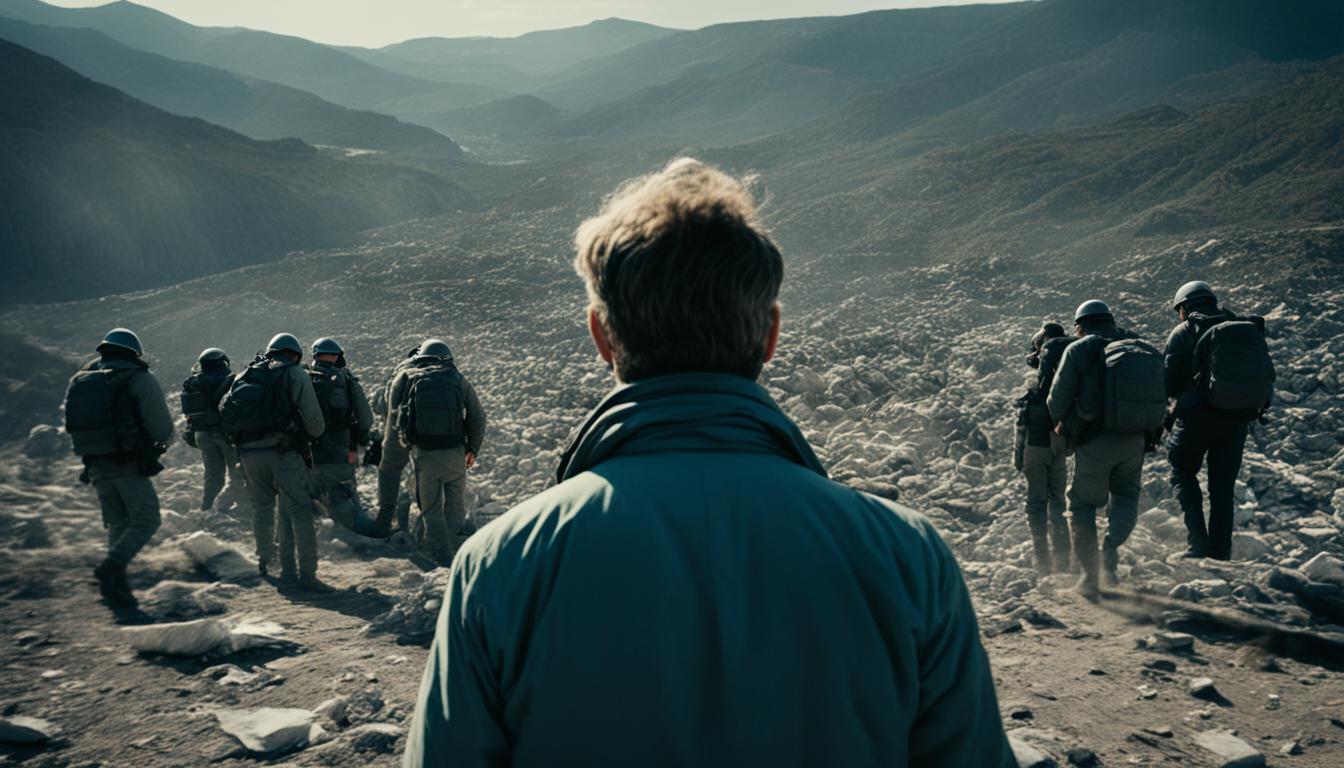Welcome to our in-depth exploration of documentary photography, a genre that captures the essence of real-life situations and settings. In this article, we will delve into the principles and history of this powerful medium, shining a light on the photographers who have used their lens to unveil hidden truths and advocate for change.
Documentary photography encompasses a wide range of styles and themes, including social documentary, conservation photography, ethnographic photography, war photography, and more. Through their work, documentary photographers aim to record reality and expose injustices or lesser-known aspects of society.
The history of documentary photography dates back to the mid-1800s, with influential figures such as Jacob Riis and Lewis Hine using their cameras to document the social issues of their time. Their impactful images shed light on poverty, child labor, and the living conditions of marginalized communities, sparking conversations and influencing social reform.
Documentary photography holds immense power and serves a crucial role in society. By employing various techniques and approaches, including visual storytelling and photojournalism, documentary photographers create compelling narratives that inform, engage, and inspire viewers. They capture decisive moments, employ careful framing and composition, and harness the interplay of light and shadow to convey the essence of a scene.
The genre has seen significant evolution over time, adapting to changing technology and societal perspectives. From the transition to color photography challenging traditional notions, to the digital era amplifying the reach and impact of documentary photography, the genre has continued to shape our understanding of the world.
At its core, documentary photography holds the power to ignite conversations, spark social change, and preserve historical moments. By capturing the human condition, it serves as a visual record of our past, shaping public opinion, and inspiring humanitarian efforts.
Throughout this article, we will explore the principles, history, role, and ethics of documentary photography. Together, let’s embark on this captivating journey into the world of visual storytelling.
Key Takeaways:
- Documentary photography captures real-life situations and settings, aiming to reveal hidden truths and advocate for change.
- Photographers like Jacob Riis and Lewis Hine played pivotal roles in shaping the genre’s history by addressing social issues through their images.
- Documentary photography serves as a powerful tool for raising awareness, sparking dialogue, and evoking emotional responses.
- Technological advancements and changing perspectives have influenced the evolution of documentary photography throughout history.
- The genre’s impact on society extends beyond documentation, shaping public opinion, and inspiring humanitarian efforts.
The Role of Documentary Photography in Society
Documentary photography plays a crucial role in society, employing various techniques and approaches to capture the truth of life and deliver powerful visual narratives. Through the art of visual storytelling, documentary photographers inform, educate, and evoke emotional responses from viewers, inspiring social change and raising awareness about real-world issues.
One of the key photography techniques employed by documentary photographers is immersion in their subjects’ environments. By spending time with their subjects, understanding their lives, and gaining their trust, photographers are able to capture authentic and intimate moments. This approach allows them to reveal the complexities of human experiences and provide a deeper understanding of different cultures, communities, and social challenges.
The art of framing and composition also plays a vital role in documentary photography. Photographers carefully select the elements within the frame to convey their desired message and evoke specific emotions. This attention to detail allows viewers to connect with the subjects and stories on a deeper level, fostering empathy and understanding.
The Power of Visual Storytelling
“Photography takes an instant out of time, altering life by holding it still.” – Dorothea Lange
Visual storytelling is at the heart of documentary photography. Through a single photograph, photographers have the power to tell a compelling story and capture the essence of a moment. The ability to freeze time and preserve historical moments is what distinguishes documentary photography from other art forms. By documenting events and issues that have societal significance, photographers contribute to the collective memory and shape our understanding of the world.
Documentary photography is closely linked to photojournalism, as both focus on capturing real-world events and situations. Photojournalists utilize their skills to document news-worthy events, providing factual and unbiased visual accounts. Their work informs public opinion, influences policy, and holds power-holders accountable. Some of the most iconic examples of documentary photography come from the field of photojournalism, such as Robert Capa’s war coverage and Eddie Adams’ “Saigon Execution” photograph.
Not all documentary photography focuses solely on news topics. Documentary photographers also shed light on social issues that often go unnoticed. By highlighting marginalized communities, human rights violations, environmental problems, and more, they amplify voices and advocate for change.
Documentary Photography Examples
Examining influential documentary photography examples further illustrates the profound impact this genre has on society. These photographs not only capture important moments but also resonate with viewers, provoking emotional responses and igniting conversations.
| Photographer | Example Photograph | Description |
|---|---|---|
| Dorothea Lange | One of the most iconic images from the Great Depression era, Lange’s “Migrant Mother” captures the hardships and resilience of a mother and her children. | |
| Robert Capa |  |
Capa’s powerful war coverage photographs, particularly those taken during the Spanish Civil War, depict the atrocities and bravery of soldiers in the midst of conflict. |
| Gordon Parks | Parks’ photographs of the civil rights movement in the United States capture the struggles, triumphs, and resilience of African Americans fighting for racial equality. |
These examples represent a small fraction of the impactful work that documentary photographers have contributed to society. By capturing significant moments and stories, these photographers have shaped public opinion, encouraged dialogue, and compelled individuals and institutions to address social issues.
The Evolution of Documentary Photography
Documentary photography has a fascinating history of evolution, shaped by technological advancements and shifting societal perspectives. Throughout the late 19th and early 20th centuries, pioneers like Jacob Riis and Lewis Hine harnessed the power of photography to advocate for social reform, shedding light on the harsh living conditions of the poor and inspiring change.
The transition from black and white to color photography marked a significant turning point in the evolution of documentary photography. It challenged traditional notions of what constituted “serious” photography and opened up new artistic possibilities. Color brought a new dimension to the visual storytelling, enabling photographers to capture the vibrant nuances of reality with greater fidelity.
Modern practitioners of documentary photography continue to push the boundaries of the genre, blurring the lines between photojournalism, art, and activism. They use their cameras as tools to bring attention to societal issues, effect change, and spark conversations. By experimenting with innovative techniques, unique perspectives, and unconventional subject matter, contemporary documentary photographers challenge viewers’ preconceptions and offer fresh insights into our ever-changing world.
The advent of the digital era has revolutionized documentary photography, allowing photographers to instantaneously capture, edit, and share their work. The speed and accessibility of digital platforms have amplified the impact of documentary photography, reaching global audiences in real time. Social media platforms have become powerful tools for showcasing compelling visual narratives and raising awareness about critical issues.
Milestones in the Evolution of Documentary Photography
| Period | Milestone |
|---|---|
| Late 19th – early 20th centuries | Pioneers like Jacob Riis and Lewis Hine use photography for social reform, exposing living conditions of the poor |
| Transition to color photography | Challenges traditional notions, expands artistic possibilities |
| Modern era | Blurring boundaries between photojournalism, art, and activism |
| Digital era | Instant sharing, global reach, and impact |
The evolution of documentary photography reflects our society’s ever-changing viewpoints and the constant innovation in technology. As we move forward, documentary photographers will continue to adapt their craft, using it as a powerful medium to document the world, tell stories, and provoke meaningful conversations about our shared humanity.

The Power of Documentary Photography
Documentary photography holds immense power in shaping societies and driving change. Through its ability to capture raw and authentic moments, it has the potential to spark meaningful conversations about critical social issues and drive collective action. By shedding light on injustices and capturing the human condition in its truest form, documentary photographs serve as a catalyst for advocacy and policy changes.
These powerful images act as historical documents, preserving pivotal moments that define eras and movements, allowing future generations to learn from the past. Moreover, documentary photography has played a significant role in influencing public opinion and shaping policy decisions throughout history. By presenting visual evidence that captures the essence of events, it alters perceptions, challenges biases, and expands our collective understanding.
With the advent of digital advancements and the rise of social media, documentary photography has reached new heights of impact and accessibility. It has become a powerful tool for storytellers from diverse backgrounds to share their unique perspectives and narratives. The democratization of access to these visual stories has allowed marginalized voices to be heard, amplifying the collective call for justice, empathy, and positive change.
Through visual storytelling, documentary photography bridges the gap between distant stories and human connection, provoking empathy and encouraging viewers to question the status quo. It compels us to reflect, engage, and take action for a more just and equitable society.
Ethics in Documentary Photography
When it comes to documentary photography, ethical considerations are paramount. As photographers, we hold a responsibility to our subjects and the integrity of our craft. Informed consent plays a crucial role, especially when working with vulnerable individuals or sensitive situations. It is essential to seek permission and ensure that subjects fully understand how their images will be used and the potential consequences of their publication.
We must strive to maintain objectivity and truthfulness in our work, avoiding the distortion of reality. The authenticity of documentary photography lies in its ability to capture genuine moments and convey honest narratives. By balancing the impact on the scene with respect for the subjects, we preserve the dignity and integrity of their stories.
As documentary photographers, our role extends beyond capturing compelling visuals. We are educators, using our photographs to inform and raise awareness. With this role comes the responsibility to ensure the authenticity of the visual narratives we share. It is through ethical documentary photography that we maintain the genre’s credibility and impact.
When deciding which images to publish, we must carefully consider the potential harm they may cause to our subjects. Context, consent, and cultural sensitivity should guide our choices so that we minimize any negative consequences. Our aim is to create meaningful and thought-provoking work that sparks dialogue and fosters understanding.
Integrity is the foundation of ethical documentary photography. We must remain committed to preserving the truth and conveying the human experience without manipulation or exploitation. By upholding ethical standards, we contribute to a genre that brings attention to important issues, drives social change, and advocates for justice.
Conclusion
Documentary photography is a powerful medium that captures the essence of real-life situations, exposing hidden truths and advocating for change. It has a rich history deeply rooted in social reform, and its evolution over time reflects advancements in technology and shifts in societal perspectives. As documentary photographers, we have the unique ability to inform, engage, and inspire viewers through our visual storytelling.
The impact of documentary photography on society cannot be understated. It serves as a catalyst for dialogue, shedding light on critical social issues and influencing public opinion. Through our work, we have the power to spark conversations, advocate for policy changes, and inspire humanitarian efforts. Documentary photographs also serve as historical documents, preserving significant moments and shaping our understanding of past events and eras.
However, as we navigate the world of documentary photography, it is crucial that we approach our work with ethical considerations in mind. Respecting the integrity and authenticity of our narratives is essential. Obtaining informed consent from subjects, maintaining objectivity, and avoiding the distortion of reality are principles we must adhere to. By doing so, we can uphold the credibility and impact of the genre, ensuring that our visual stories bring about positive change.
FAQ
What is documentary photography?
Documentary photography is a genre of photography that aims to capture real-life situations and settings, using visual storytelling to inform, engage, and inspire viewers.
What are some examples of documentary photography?
Some influential examples of documentary photography include Dorothea Lange’s “Migrant Mother,” Robert Capa’s war coverage, and Gordon Parks’s portrayals of the civil rights movement.
How has documentary photography evolved over time?
Documentary photography has adapted to technological advancements and shifting societal perspectives, with practitioners blurring the lines between photojournalism, art, and activism.
What is the impact of documentary photography on society?
Documentary photography has the power to spark dialogue, advocate for policy changes, inspire humanitarian efforts, shape public opinion, and preserve historical moments.
What ethical considerations should documentary photographers keep in mind?
Documentary photographers should obtain informed consent from subjects, maintain objectivity and truthfulness, and balance the impact on the scene with respect for the subjects to ensure the authenticity and ethics of their work.
What is the significance of the authenticity of documentary photography?
The authenticity of documentary photography plays a vital role in maintaining the credibility and impact of the genre, as it upholds the integrity of visual narratives and respects the subjects portrayed.
Why is documentary photography an important medium?
Documentary photography is a powerful medium that captures the truth of life, telling stories, raising awareness, and informing, engaging, and inspiring viewers about the world and its people.
What are the key principles and history of documentary photography that are essential to master the art of it?
The art of documentary photography techniques dates back to the early 20th century when photographers aimed to capture reality in its rawest form. Key principles include honesty, objectivity, and a focus on storytelling. Masters like Dorothea Lange and Robert Capa have set the standard for this timeless art form.




